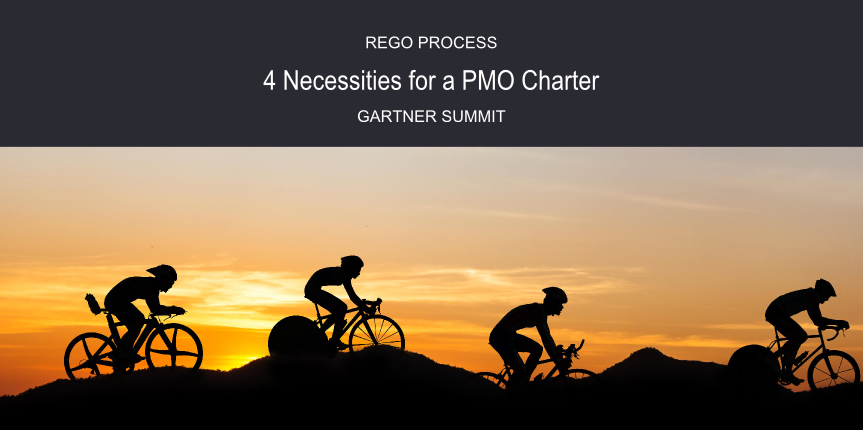 Wendy Kraly and our team of PPM masters recently sponsored and attended the Gartner PPM & IT Governance Summit in Texas. They came back full of excitement.
Wendy Kraly and our team of PPM masters recently sponsored and attended the Gartner PPM & IT Governance Summit in Texas. They came back full of excitement.
“It reinforced what we know is really important,” said Wendy, pointing to Lars Mieritz’s talk, Does My PMO Look Too Big in This Charter?
To build or enhance a PMO (Project Management Office), you can never be more successful than your design, which means it’s time to get deliberate about your PMO Charter.
“Whenever regoProcess steps into an advisory role, building the PMO Charter is foundational,” said Wendy.
Lars referred to the charter as “the rudder,” and it’s true. The PMO Charter is your guiding force, your strategy.
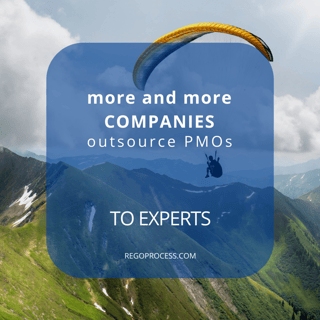 1 | Understand the PMO Charter's Purpose
1 | Understand the PMO Charter's Purpose
A PMO Charter describes your PMO vision, objectives, and functions, as well as resource roles and responsibilities.
“The charter is a communication piece for what you do and why you exist,” said Wendy, noting her appreciation for the emphasis Gartner made on embedding key business drivers and supporting charter evolution.
“A PMO is not static,” said Wendy. “It needs to be reviewed every one to two years, to make sure you’re still capturing and driving value for the business.”
Driving value for the business requires analyzing how you function, the roles you need, and your staffing requirements.
2 | Pick the Correct PMO Organizational Structure
As a PMO matures, your roles and titles change. Naturally, a lot depends on the size of the organization.
“At one point, I managed an organization as the only PMO staff,” said Wendy. “It was a decentralized PMO, so the project leaders didn’t report to me.”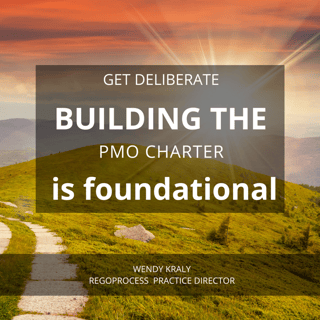
In a centralized PMO, project leaders report directly to the PMO.
“Figuring out the appropriate organizational structure for your PMO depends on your business’s needs,” said Wendy. “It’s what we do at regoProcess. We are constantly helping companies create, or review and revise, their PMO Charters.”
“One recent client’s key deliverable included revisiting the charter to analyze the PMO’s structure and effectiveness,” said Wendy. “Then we communicated to the rest of the organization, so they understood how the PMO provides value and helps the organization successfully manage projects.”
3 |Use PMO Sizing Practices
To make sure your PMO reflects an appropriate structure, look to sizing.
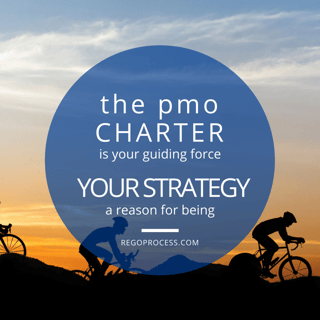 “People often ask what size is the right size for my PMO,” said Wendy. “I am in full support of what Lars recommended at Gartner, which is sizing based on the services outlined in the charter—the number and length of tasks and activities.”
“People often ask what size is the right size for my PMO,” said Wendy. “I am in full support of what Lars recommended at Gartner, which is sizing based on the services outlined in the charter—the number and length of tasks and activities.”
And as Lars reinforced, a few other keys will help you determine sizing, like complexity, maturity, use of a tool—such as Clarity PPM (CA PPM)—and how the company is geographically situated. Is your company global? In one city, across the country? Do you use external resources?
Rego is often asked to mentor and train budding PMOs.
“More and more companies are outsourcing their PMOs to experts,” said Wendy. “They may not have in-house skills to fill those roles, at least in the beginning, so it’s common for external resources to staff the PMO and teach people in the organization how to grow into the position.”
4 | Evaluate Your PMO Charter
“If your company has an existing PMO, even though you may already have a PMO Charter,” said Wendy, “review the charter and make sure the roles and size of the PMO reflect the organization’s changes and capabilities.”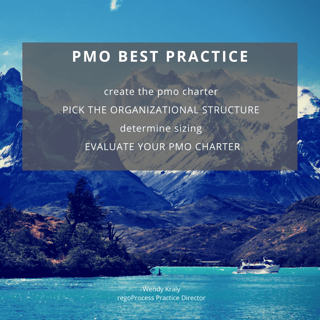
PMOs guide organizations, and a PMO Charter is a best practice tool to provide direction on the journey to successful project and portfolio management.
“That’s it in a nutshell,” said Wendy, “straight from the mouth of Gartner, the industry’s best.”
Are you starting a PMO? Does your existing PMO have a charter? We’d love to hear how you’ve used a charter to legitimize your PMO and propel your organization.
Join our mailing list below.
Wendy Kraly is an expert in project and portfolio management, program management, project office development, and organizational change and process improvement. During the last twenty years, Wendy has helped organizations across a wide swath of industries, taught strategic and project management curriculum to MBA Students, and contributed to PMI’s Standard for Portfolio Management 2nd and 4th editions. PMP certified since 2001, Wendy holds a Six Sigma Green Belt, ITIL Service Management Foundations certification, and an MBA from Concordia University. She is Rego’s Process Practice Director, both overseeing the portfolio and serving as senior PPM process consultant. She resides in Wisconsin with her husband and two dogs where she enjoys outdoor activities like hiking, kayaking, and snowshoeing.
Let Rego Be Your Guide
Rego also offers free health assessments, webinars, and half-day training classes for Clarity PPM on Roadmaps in the Modern UX, Power BI, Portfolio Management, and Jaspersoft.
For a full list of Clarity PPM Services, visit regoconsulting.com.

